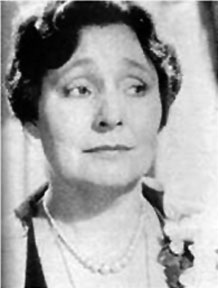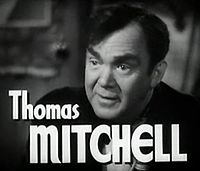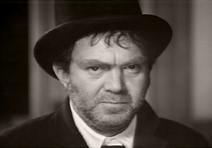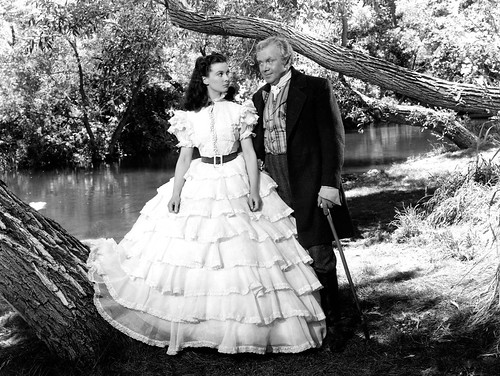
Welcome back to In Character, after our hiatus. A lot has been happening in the character actor world, starting with my signing an agent for my book (www.also-starring.com), completing the proposal, and sending it out to publishers. What fun! Now I just have to sit back and wait for that million dollar advance. Go get 'em, Neil!
I've also been catching up on some movies I saw a long time ago, particularly ones that left me cold the first time. My thought was that many of the films I initially didn't like, I'd now have an appreciation for. Instead, I've generally just confirmed my first impression. Nowhere was this more clear to me that in my re-watching of "An American in Paris."
Now let me state for the record that I am a big Gene Kelly fan. A huge fan, even. He's my favorite male dancer, and I actually think he can be a pretty good actor too (see his dramatic work in Robert Siodmak's "Christmas Holiday"). But folks, "An American in Paris" is just no good. Kelly mugs like a madman, the plot is really dated even for 1951, and Leslie Caron is, frankly, not great. Even the final dance number, which it has some amazing cinematography is a pale retread of the ballet from Powell & Pressburger's "The Red Shoes," an admitted influence on this film. Someday I'll go into detail about why I think Vincente Minelli is overrated, but for now let's look at the real saving grace of "American," the wonderful supporting antics of Oscar Levant.
Born in Pittsburgh, Levant was a child piano prodigy who made his way to New York where he studied music and eventually worked on Broadway. During this period he even became part of the legendary Algonquian round table, which gives you a sense of his fierce wit. By the late 1920s he had made it out to California. Through his music he befriended George Gershwin who not only helped his career but inspired Levant to start composing serious music, not just pop standards. He was incredibly skilled on the piano; just have a listen to this clip of him performing Chopin:
Yet for all of his musical ambitions, Levant was also a great raconteur, one of Hollywood's prized wits, and a popular guest on radio talk shows. During the 1930s he filled the airways with piano tunes and quotes like "There's a fine line between genius and insanity. I have erased this line." He was so popular that he eventually was given his own radio show and later a TV show in the 1950s (the show would be cancelled due to Levant's incessant jokes like "Now that Marilyn Monroe is kosher, Henry Miller can eat her.").
Surprisingly, Levant didn't make much of a dent in the film industry for years, or at least he wasn't seen on screen. Levant worked tirelessly in the music department of many studios, while still composing and performing his own works with greats such as Aaron Copland. Occasionally he'd be featured on screen as an accompanist or sometimes soloist, but the movies had yet to showcase his incredible comic talent. But by the 1940s Hollywood had caught on, and began to cast Levant in small parts here and there, in "Rhapsody in Blue," "Humoresque," often films where he played a wisecracking piano-player (not too much of a stretch). In "Rhapsody" he played himself meeting Gershwin (played by Robert Alda), with his persona already fully intact.
His looks made him a natural for character parts. He looks like a live-action Moe the Bartender, and has a cigarette perpetually in his mouth. Yet Levant used his plug-ugly features to great effect, as often a simple disdainful look at the camera could say more than any scripted line.
Levant's breakthrough onscreen came with "An American In Paris." The casting for a wise-cracking piano-playing best friend was a no-brainer, and there's some discussion as to whether the role was written for him or not. Either way, Levant took scenes and ran with them, no small feat when Gene Kelly's overacting two feet away. In this dream sequence, Levant imagines himself playing all the parts of Gershwin's Concerto in F, and is also everyone in the audience. Possibly a throwback to an early Buster Keaton short, this sequence has no real place in "An American in Paris," but it's a highlight of the film:
Unfortunately Levant's best scene in the film isn't online. It's worth nothing because it's a non musical moment. In the film, Gene Kelly and Georges Guetary are both in love with the same woman. As they're sitting at a table talking about her, Levant (who is sandwiched between the two), realizes it and grows increasingly nervous. He lights cigarettes, fumbles with his coffee, and generally makes a mess of himself, while the two lovers ramble on, oblivious. He may not have been a well-known comic, but Levant is absolutely brilliant in this scene, one of the best comic performances I've ever seen.
Having established his musical chops, Levant went on to co-star in a few more big-budget entertainments, including "The Band Wagon." He ensured himself a place in MGM musical history by having the good fortune to perform "That's Entertainment" with Fred Astaire. Yet look at the way Levant carries himself during the number. He's hitting his marks, barely, showboating when he wants, slouching when he doesn't. It's all an act, he knows it's silly, and he's laughing with us:
Levant continued to appear here and there, before moving into his TV success full-time. Yet he may be making a comeback - according to Newsweek, Ben Stiller is contemplating a movie based on Levant's life. Huh. We'll see if that pans out.
Levant's also a witty writer, with his "Memoirs of an Amnesiac" a recommended read. He's not only a great piano player, but truly a fantastic screen comic, and one that I wish had made more movies. His TV show, however, is wonderful to watch. Low-key, casual, and clearly non-scripted, it's a beautiful reminder of how engaging early TV used to be. In this clip Levant chats with Fred Astaire, who is clearly overwhelmed by Levant's patter, and is content to simply laugh and sing a song or two. Enjoy:
Suggested Viewing:
-Rhapsody in Blue
-An American in Paris
-The Band Wagon
Suggested Listening:
-Levant Plays Gershwin (available on iTunes!)





